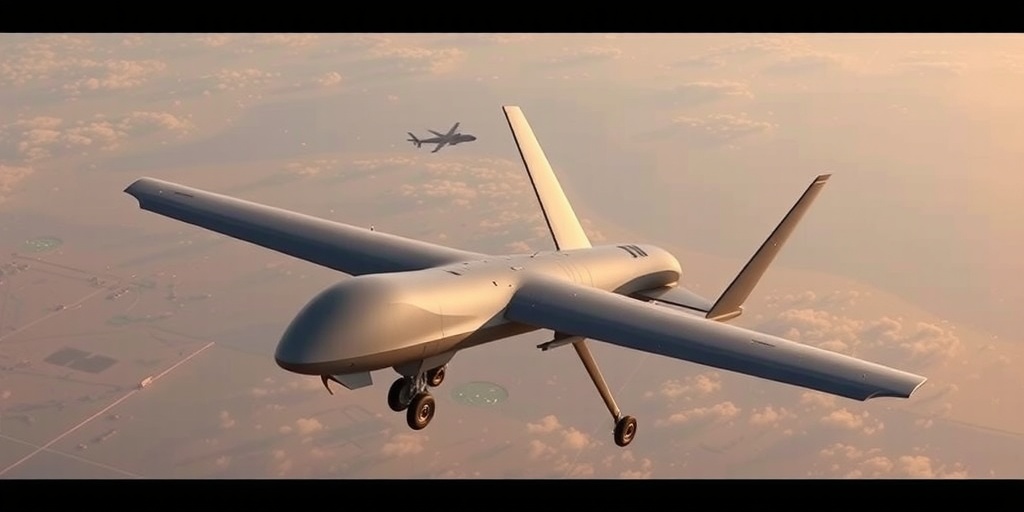Now Reading: Houthi Drones: Enhanced Stealth and Extended Range
-
01
Houthi Drones: Enhanced Stealth and Extended Range
Houthi Drones: Enhanced Stealth and Extended Range

Houthi Attacks in the Red Sea: A Shift in the Arsenal with Hydrogen Fuel Cell Technology
For over a year, the Houthi rebels in Yemen have been a significant threat in the Red Sea, targeting merchant vessels and warships with missiles, drones, and explosive-laden speedboats. Their actions have created disruptions in one of the globe’s busiest waterways, raising concerns about the implications for global trade and maritime security.
Claiming to stand in solidarity with Palestinians in Gaza, the Houthis have escalated their operations, attacking ships as far as 100 miles off the Yemeni coast. This pattern of aggression has triggered retaliatory airstrikes by U.S. and Israeli forces. Recently, however, the rebels seem to have largely ceased their attacks following a cease-fire agreement between Israel and Hamas in January, but new evidence suggests they may have enhanced their capabilities significantly.
Weapons researchers examining the conflict have reported that the Houthis may have developed or acquired new drone technology that could make them more challenging to detect. Taimur Khan, an investigator from Conflict Armament Research, noted that this new technology could provide the Houthis an element of surprise should they decide to revive hostilities against U.S. or Israeli military forces. This sophisticated capability raises alarms about the potential for renewed conflict in the region.
In November, Mr. Khan traveled to southwestern Yemen, where he documented components of a hydrogen fuel cell system recovered from a small boat intercepted offshore. Hydrogen fuel cells, which generate electricity by combining compressed hydrogen and oxygen, are noteworthy for their efficiency, producing minimal noise and heat.
Traditionally, Houthi drones powered by gas-burning engines or lithium batteries have a flight range of approximately 750 miles. In contrast, incorporating hydrogen fuel cells could potentially extend this range threefold, while also complicating detection by acoustic and infrared sensors. In a recent report, Conflict Armament Research detailed their findings regarding these fuel cell components, which appear to have been manufactured by companies in China. Some compressed hydrogen tanks intercepted by authorities were even mislabeled as oxygen cylinders.
While it remains unclear if these components were directly sourced from China, the emergence of such technology could significantly bolster the Houthis’ capabilities, enhancing their self-sufficiency in weaponry. Traditionally, many Houthi weapons shipments intercepted at sea have been traced back to Iran. Mr. Khan emphasized that if the Houthis are indeed obtaining these advanced items independently, it could indicate a shift in their supply chain dynamics, allowing them greater autonomy rather than solely relying on regional backers.
During the inspection, several noteworthy items were discovered aboard the intercepted vessel, including guided artillery rockets, small European-manufactured engines capable of powering cruise missiles, radars, ship-tracking devices, and hundreds of commercial drones alongside the hydrogen fuel cell parts. The implications of this find are significant, suggesting that the Houthis are augmenting their military arsenal and operational capabilities.
Historically, hydrogen fuel cells have been around for several decades, famously powering NASA spacecraft during the Apollo missions. Their application for military drones started gaining traction in the late 2000s amid U.S. military engagements in Iraq and Afghanistan. Since then, hydrogen power has become increasingly popular in military applications, cherished for its ability to extend the operational range of drones. Andy Kelly from Intelligent Energy indicated that this technology is also becoming more prevalent in commercial sectors, aiding various applications such as infrastructure inspections and environmental monitoring.
With the ability to remain airborne longer, drones powered by hydrogen fuel cells can collect more extensive data, making them invaluable for reconnaissance missions. The energy storage capacity of hydrogen systems outstrips that of lithium batteries significantly, allowing operators to carry heavier payloads over longer distances. Moreover, fuel cells produce fewer vibrations, benefitting the functionality of surveillance cameras and other sensors typically used in aerial reconnaissance missions.
Despite the magnitude of their findings, Conflict Armament Research has opted not to disclose the identities of the Chinese companies that manufactured the components found near Yemen. This policy underscores their dedicated approach to collaborating privately with businesses to trace how their products end up in various conflict zones, ensuring the integrity of their research process.
As the situation in Yemen remains fluid, the Houthis’ potential technological advancements and evolving strategies signify a concerning trend for maritime security in the Red Sea and beyond. The international community is urged to remain vigilant as these developments unfold, watching closely for any resurgence in Houthi aggression that could lead to further global trade disruptions and regional instability.
Stay Informed With the Latest & Most Important News
Previous Post
Next Post
-
 01New technology breakthrough has everyone talking right now
01New technology breakthrough has everyone talking right now -
 02Unbelievable life hack everyone needs to try today
02Unbelievable life hack everyone needs to try today -
 03Fascinating discovery found buried deep beneath the ocean
03Fascinating discovery found buried deep beneath the ocean -
 04Man invents genius device that solves everyday problems
04Man invents genius device that solves everyday problems -
 05Shocking discovery that changes what we know forever
05Shocking discovery that changes what we know forever -
 06Internet goes wild over celebrity’s unexpected fashion choice
06Internet goes wild over celebrity’s unexpected fashion choice -
 07Rare animal sighting stuns scientists and wildlife lovers
07Rare animal sighting stuns scientists and wildlife lovers





















